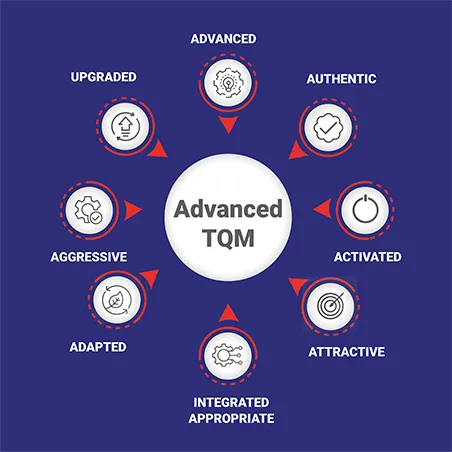
How To Manage Six Sigma Effectively?
August 29, 2017
Which Lean Six Sigma Course Should You Opt For?
September 12, 2017How Do Six Sigma And TQM Differ?
Both Six Sigma and TQM are quality improvement systems that look forward to reducing defects and improving the quality of processes. There is a very thin line of difference between both these systems, which has many managers and professionals getting torn up between which one they must use within their organization. Both Six Sigma and TQM are effective tools for quality management, but it is essential to understand the difference between the two, so as to analyze which one you must implement within your organization. Whichever system you plan to use within your organization, you can approach TQMI to provide you with the accurate training because this is one place that offers both Six Sigma certification in India and Quality Management System training in India that are taught by leading professionals.
Six Sigma is the methodology that aims at performance improvement by reducing the number of defects produced, resulting in profit increase and cost reduction. On the other hand, TQM is concerned with the employment, maintenance, and development of the organizational processes, resulting in incremental change in process quality. So, while both the tools are aimed at quality improvement and reduction of defects, where does the difference lie? The main difference lies in the focus, approach, and scope. Let us look at these differences in detail.
Focus
TQM focuses on the goals that are quantitative in nature and related to individual departments with the ultimate focal point being customer satisfaction. But, Six Sigma utilizes the efforts of multiple departments and has a data-driven and statistical approach that measure and analyzes data to determine the number of defects leading to degrading of process quality. In other words we can say that TQM ensures that every member of the organization works towards the improvement of existing processes and systems for long-term products/services, while Six Sigma focuses on first identifying the defects and eliminating them.
Approach
TQM views quality as conformance to internal requirements, while Six Sigma improves quality by reducing the number of defects. Six Sigma reduces operational costs by focusing on defect reduction, cycle time reduction, and cost savings. It is different from traditional cost-cutting measures that reduce quality and value, and focus on identifying and eliminating costs that provide no value to customers.
Quality
TQM defines quality as the process meeting the standards established by the organization. But, Six Sigma defines it as the process with minimum amounts of defects. This is why TQM delivers superior quality manufactured goods, while Six Sigma delivers better results and customer satisfaction.
Skills required
Six Sigma requires the skills of well-trained professionals like Green or Black Belts, while TQM doesn't require any such extensive training, and is carried out by managers who are not solely dedicated to TQM. Six Sigma requires participation of only certified professionals, while TWM is a part-time activity that be carried out easily by quality managers.
So, we can now see that Six Sigma can deliver more effective and better results as compared to TQM, as it is a new approach over the traditional approach of TQM. The process of Six Sigma is more result-oriented and accurate, which will definitely make it go much further than TQM in the future.





